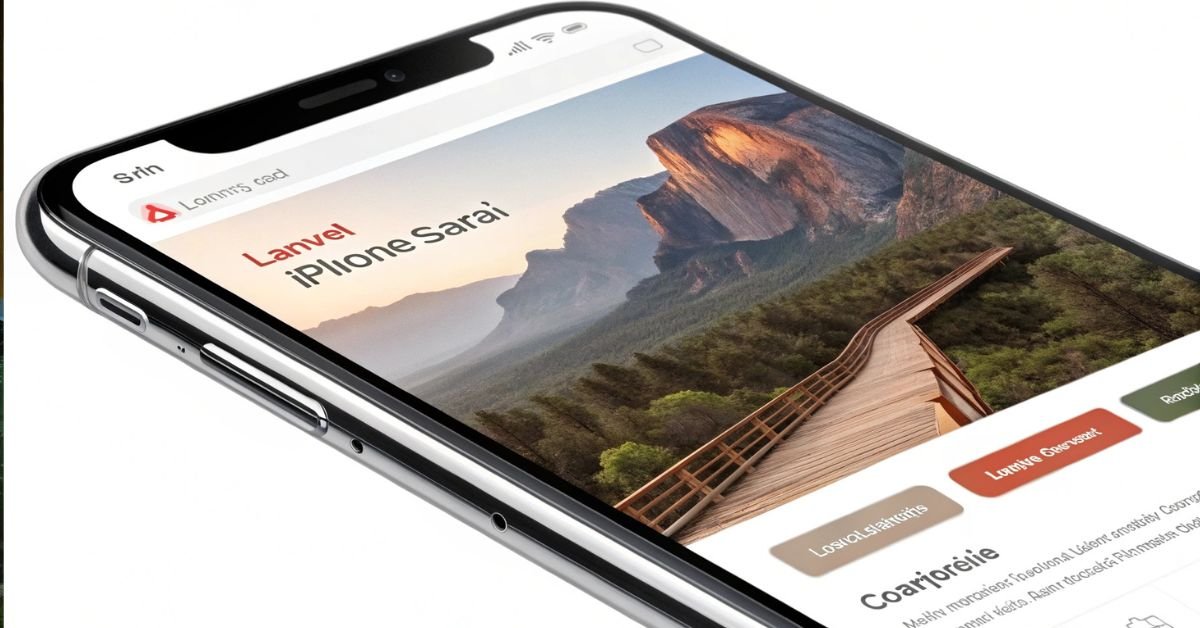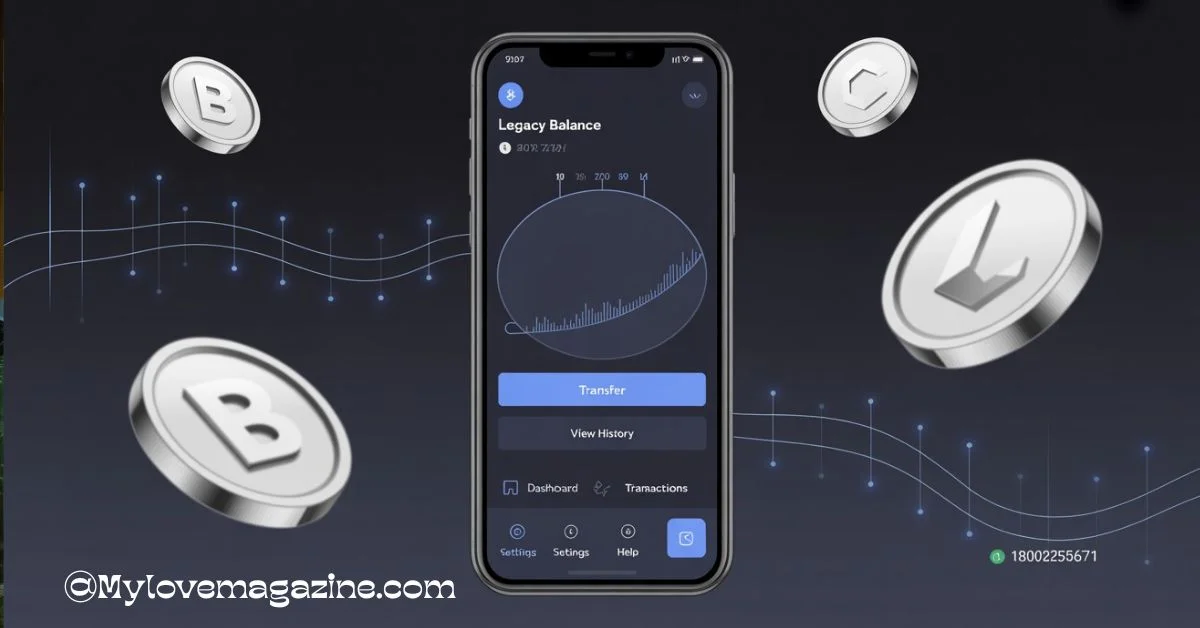Laravel App iPhone Hide Tool Bar After Link Click: Complete Guide!
To make a Laravel app iPhone hide tool bar after link click, use JavaScript to trigger a small scroll after navigation. Combine this with proper viewport meta tags and CSS to handle safe areas. For best results, consider converting your Laravel app into a PWA to hide Safari’s toolbar fully.
Stay tuned with us — we’ll soon cover more on how to make your Laravel app iPhone hide tool bar after link click even better!
What Is the iPhone Safari Toolbar and Why Does It Matter in Laravel Apps?
The iPhone Safari toolbar is the UI element at the top and bottom of the browser, including navigation and action buttons. For developers working on a Laravel app iPhone hide tool bar after link click; this toolbar can be a barrier to creating an immersive mobile experience. The toolbar occupies screen space that your app could otherwise use to display content, and it can interfere with touch interactions.
For Laravel apps, especially those optimized for mobile or built as SPAs or PWAs, hiding or minimizing this toolbar after a link click is essential to deliver a clean, distraction-free interface on iPhones.
What Is Safari Auto Hide Toolbar and How Does It Work on iPhone?
Safari on iPhone has a built-in auto-hide toolbar feature that typically hides the toolbar when the user scrolls down the page. However, this behavior can be inconsistent, especially after clicking links, where the toolbar may reappear and take up screen space.
Understanding how Safari auto-hides toolbar works is crucial for your laravel app iphone hide tool bar after link click goal because you can leverage user scroll events to programmatically trigger toolbar hiding and maximize your app’s visible area on the iPhone screen.
How Does the iPhone Safari Toolbar Behave After Clicking Links?
Understanding Safari’s toolbar behavior is key when implementing a laravel app iphone hide tool bar after link click solution. When a user taps a link, Safari typically reloads the page and shows the toolbar again, ensuring users have navigation controls available.
However, on many Laravel apps, especially those using client-side navigation, the toolbar can stubbornly remain visible, limiting the viewable area. Safari’s automatic toolbar hiding usually depends on user scroll actions, but it doesn’t always trigger correctly after a link click, complicating the user experience in your Laravel app.
What Are the Challenges of Hiding the Toolbar in a Laravel App on iPhone?
When building a laravel app iphone hide tool bar after link click, several challenges arise:
- Safari’s UI elements like the toolbar are controlled by the browser, not web apps.
- Page reloads after link clicks reset UI states, often showing the toolbar again.
- iOS Safari’s viewport behavior causes difficulty aligning full-screen layouts.
- Different iOS versions behave differently, affecting toolbar visibility.
Because of these limitations, developers must use indirect methods—like scrolling tricks and viewport adjustments—to hide the toolbar effectively.
How Can You Optimize Your Laravel App for Mobile and iPhone Safari?
Optimizing your Laravel app for iPhone Safari is a critical step toward solving the laravel app iphone hide tool bar after link click problem. This involves:
- Ensure your app layout is fully responsive and mobile-friendly.
- Using Laravel Mix to compile optimized assets.
- Testing extensively on physical iPhones and Safari versions.
- Considering converting your app into a Progressive Web App (PWA) for better control of UI elements.
A well-optimized Laravel app not only performs faster but can better manage Safari’s UI quirks, including toolbar behavior.
Which Viewport Meta Tags Help Control Toolbar Display in Laravel Apps?
The viewport meta tag is fundamental when addressing the laravel app iphone hide tool bar after link click issue. Properly configured viewport tags influence Safari’s rendering and toolbar appearance.
Use this tag in your Laravel Blade templates:
html
CopyEdit
<meta name=”viewport” content=”width=device-width, initial-scale=1, viewport-fit=cover”>
This tells Safari to use the device width and supports full-screen layouts, essential for minimizing toolbar impact on your app’s visible area.
How Can JavaScript Be Used to Hide the Safari Toolbar on iPhone After a Link Click?
JavaScript is your most effective tool for implementing a laravel app iphone hide tool bar after link click strategy. By programmatically scrolling the page slightly after a user clicks a link, you can trigger Safari to hide the toolbar.
Example code snippet:
javascript
CopyEdit
document.querySelectorAll(‘a’).forEach(link => {
link.addEventListener(‘click’, () => {
setTimeout(() => {
window.scrollTo(0, 1);
}, 150);
});
});
This scroll trick nudges Safari to hide the toolbar, improving your Laravel app’s mobile experience and solving common issues where the mobile Safari address bar is not hiding properly.
How to Hide the Search Bar on iPhone Safari in Your Laravel App?
Besides the toolbar, the search bar on iPhone Safari can also take up valuable screen space. While you can’t directly control Safari’s UI elements, optimizing your Laravel app layout and using correct viewport settings helps minimize the search bar’s prominence.
Using the viewport meta tag and encouraging users to add your Laravel app as a PWA can reduce the search bar’s impact. These practices complement your laravel app iphone hide tool bar after link click strategy by maximizing available screen real estate.
Are There CSS Tricks to Minimize or Hide the Toolbar on iPhone Safari?
CSS cannot directly hide Safari’s toolbar but can help manage layout issues related to it. For a laravel app iphone hide tool bar after link click approach, use CSS safe area properties to respect the iPhone’s notch and home indicator areas.
Example CSS:
css
CopyEdit
body {
padding-bottom: env(safe-area-inset-bottom);
height: calc(100vh – env(safe-area-inset-bottom));
overflow-x: hidden;
}
This ensures your content fits well within the screen and reduces visual interference from Safari’s toolbar.
What Is the Step-by-Step Process to Hide the Toolbar in a Laravel App After Clicking a Link?
To solve your laravel app iphone hide tool bar after link click challenge, follow these steps:
- Add the correct viewport meta tags in your Blade templates.
- Use CSS safe-area variables to handle iPhone screen insets.
- Implement JavaScript scroll tricks after link clicks.
- Integrate these within your frontend framework’s routing lifecycle if using Vue or React.
- Test your app on real iPhones across multiple iOS versions.
- Optionally, enable PWA mode for a full-screen standalone app experience.
How Do Progressive Web App (PWA) Features Affect Toolbar Visibility on iPhone?
Turning your Laravel app into a PWA can resolve many issues related to laravel app iphone hide tool bar after link click. PWAs installed on the home screen run in standalone mode, removing Safari’s toolbar completely. This creates a native app feel and maximizes screen usage.
Laravel PWA packages simplify adding this functionality, allowing your app to bypass Safari UI constraints altogether.
Why Is the Mobile Safari Address Bar Not Hiding and How to Fix It?
One common frustration in your laravel app iphone hide tool bar after link click journey is when the mobile Safari address bar does not hide even after following best practices. This often happens due to:
- Insufficient scrolling after link clicks
- Page reloads reset the scroll position
- Incorrect viewport meta tags
- Conflicts with CSS height units like 100vh
To fix this, ensure you use a combination of JavaScript scroll tricks, proper viewport settings, and safe-area-aware CSS. Testing on real devices is critical to troubleshoot these issues effectively.
Are There Any Safari Hide Toolbar Shortcuts or Tricks on iPhone?
Unlike desktop browsers, iPhone Safari does not offer a dedicated Safari hide toolbar shortcut. The toolbar generally hides automatically on scroll or when the user interacts with the page.
However, by mimicking scroll behavior with JavaScript, your Laravel app can simulate this shortcut-like effect to trigger toolbar hiding after link clicks—integral to your laravel app iphone hide tool bar after link click solution.
How Can You Improve User Experience While Hiding the Toolbar on iPhone in Laravel Apps?
While solving laravel app iphone hide tool bar after link click, prioritize usability. Ensure that:
- Navigation remains intuitive without browser toolbars.
- Content is accessible and not obscured by device safe areas.
- Scroll and tap targets are large and responsive.
- Orientation changes and device variations are gracefully handled.
This balance enhances both appearance and functionality for iPhone users.
What Are Some Practical Code Examples for Hiding the Toolbar After Link Click in Laravel Apps?
Here are practical snippets for your laravel app iphone hide tool bar after link click implementation:
Viewport meta in Blade:
blade
CopyEdit
<meta name=”viewport” content=”width=device-width, initial-scale=1, viewport-fit=cover”>
JavaScript scroll trick:
javascript
CopyEdit
document.querySelectorAll(‘a’).forEach(link => {
link.addEventListener(‘click’, () => {
setTimeout(() => {
window.scrollTo(0, 1);
}, 150);
});
});
CSS safe-area handling:
css
CopyEdit
body {
padding-bottom: env(safe-area-inset-bottom);
height: calc(100vh – env(safe-area-inset-bottom));
}
Integrate these in your Laravel app for a smoother toolbar hiding effect.
Why Should You Optimize Your Laravel App for Toolbar Behavior on iPhone Safari?
Optimizing your laravel app iphone hide tool bar after link click behavior leads to better engagement, cleaner UI, and a near-native app experience. iPhone users expect smooth interactions, and minimizing toolbar interference makes your Laravel app feel professional and polished. This optimization also supports accessibility and increases user satisfaction, making it a worthwhile focus for any developer targeting iPhone users.
FAQ’S
Q1: Is it possible to completely remove the Safari toolbar in a Laravel app?
Complete removal isn’t possible without PWA standalone mode, but hiding it after link clicks can be done with scroll tricks.
Q2: Will this method work on all iPhones?
Most modern iPhones and iOS versions respond well to the scroll technique, though behavior may vary slightly.
Q3: Can Laravel’s frontend frameworks help with toolbar hiding?
Yes, frameworks like Vue and React allow hooking into routing to trigger scroll commands after navigation.
Q4: Does viewport-fit=cover improve toolbar hiding?
It helps by enabling full-screen layouts that utilize the entire device screen, reducing toolbar space.
Q5: What is the best long-term solution for hiding the toolbar?
Turning your Laravel app into a PWA with standalone mode is the most effective way to hide Safari’s toolbar fully.
Conclusion:
Addressing the laravel app iphone hide tool bar after link click challenge requires a mix of meta tag configuration, CSS safe-area management, and JavaScript scroll tricks. While direct control over Safari’s toolbar isn’t possible, these methods together create a smooth and immersive experience for iPhone users of your Laravel app. For ultimate control, consider leveraging PWA technology to remove the toolbar entirely. With careful implementation and testing, your Laravel app can deliver an outstanding mobile experience that keeps users engaged and satisfied.
Also read:














Post Comment